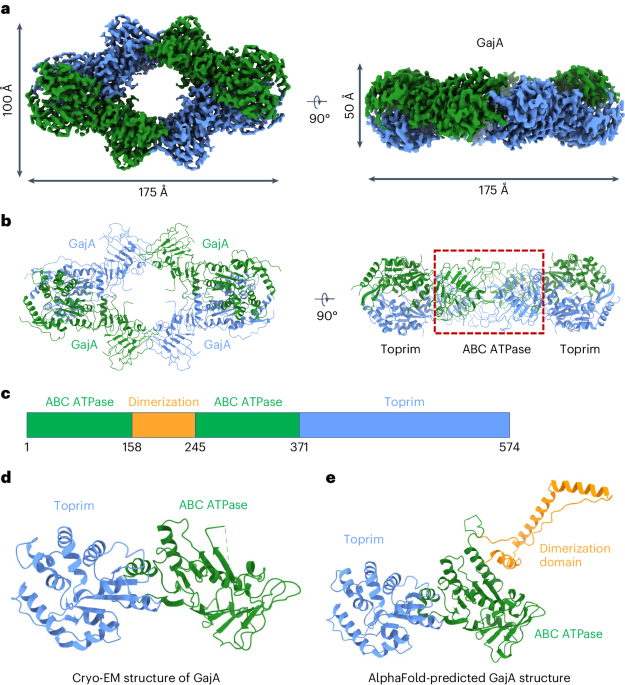Tal, N. & Sorek, R. SnapShot: bacterial immunity. Cell 185, 578â578 e571 (2022).
Google ScholarÂ
Koonin, E. V., Makarova, K. S. & Zhang, F. Diversity, classification and evolution of CRISPRâCas systems. Curr. Opin. Microbiol. 37, 67â78 (2017).
Google ScholarÂ
Duncan-Lowey, B. & Kranzusch, P. J. CBASS phage defense and evolution of antiviral nucleotide signaling. Curr. Opin. Immunol. 74, 156â163 (2022).
Google ScholarÂ
Doron, S. et al. Systematic discovery of antiphage defense systems in the microbial pangenome. Science https://doi.org/10.1126/science.aar4120 (2018).
Gao, L. et al. Diverse enzymatic activities mediate antiviral immunity in prokaryotes. Science 369, 1077â1084 (2020).
Google ScholarÂ
Millman, A. et al. An expanded arsenal of immune systems that protect bacteria from phages. Cell Host Microbe 30, 1556â1569 e1555 (2022).
Google ScholarÂ
Tesson, F. et al. Systematic and quantitative view of the antiviral arsenal of prokaryotes. Nat. Commun. 13, 2561 (2022).
Google ScholarÂ
Cheng, R. et al. A nucleotide-sensing endonuclease from the Gabija bacterial defense system. Nucleic Acids Res. 49, 5216â5229 (2021).
Google ScholarÂ
Cheng, R. et al. Prokaryotic Gabija complex senses and executes nucleotide depletion and DNA cleavage for antiviral defense. Cell Host Microbe https://doi.org/10.1016/j.chom.2023.06.014 (2023).
Google ScholarÂ
Liu, Y. et al. ATP-dependent DNA binding, unwinding, and resection by the Mre11/Rad50 complex. EMBO J. 35, 743â758 (2016).
Google ScholarÂ
Hopfner, K. P. et al. Structural biology of Rad50 ATPase: ATP-driven conformational control in DNA double-strand break repair and the ABC-ATPase superfamily. Cell 101, 789â800 (2000).
Google ScholarÂ
Aravind, L., Leipe, D. D. & Koonin, E. V. Toprimâa conserved catalytic domain in type IA and II topoisomerases, DnaG-type primases, OLD family nucleases and RecR proteins. Nucleic Acids Res. 26, 4205â4213 (1998).
Google ScholarÂ
Schiltz, C. J., Lee, A., Partlow, E. A., Hosford, C. J. & Chappie, J. S. Structural characterization of Class 2 OLD family nucleases supports a two-metal catalysis mechanism for cleavage. Nucleic Acids Res. 47, 9448â9463 (2019).
Google ScholarÂ
Jumper, J. et al. Highly accurate protein structure prediction with AlphaFold. Nature 596, 583â589 (2021).
Google ScholarÂ
Antine, S. P. et al. Structural basis of Gabija anti-phage defence and viral immune evasion. Nature https://doi.org/10.1038/s41586-023-06855-2 (2023).
Google ScholarÂ
Schiltz, C. J., Adams, M. C. & Chappie, J. S. The full-length structure of Thermus scotoductus OLD defines the ATP hydrolysis properties and catalytic mechanism of Class 1 OLD family nucleases. Nucleic Acids Res. 48, 2762â2776 (2020).
Google ScholarÂ
Baek, M. et al. Accurate prediction of proteinânucleic acid complexes using RoseTTAFoldNA. Nat. Methods https://doi.org/10.1038/s41592-023-02086-5 (2023).
Google ScholarÂ
Korolev, S., Hsieh, J., Gauss, G. H., Lohman, T. M. & Waksman, G. Major domain swiveling revealed by the crystal structures of complexes of E. coli Rep helicase bound to single-stranded DNA and ADP. Cell 90, 635â647 (1997).
Google ScholarÂ
Velankar, S. S., Soultanas, P., Dillingham, M. S., Subramanya, H. S. & Wigley, D. B. Crystal structures of complexes of PcrA DNA helicase with a DNA substrate indicate an inchworm mechanism. Cell 97, 75â84 (1999).
Google ScholarÂ
Lee, J. Y. & Yang, W. UvrD helicase unwinds DNA one base pair at a time by a two-part power stroke. Cell 127, 1349â1360 (2006).
Google ScholarÂ
Duncan-Lowey, B. et al. Cryo-EM structure of the RADAR supramolecular anti-phage defense complex. Cell 186, 987â998 e915 (2023).
Google ScholarÂ
Gao, Y. et al. Molecular basis of RADAR anti-phage supramolecular assemblies. Cell 186, 999â1012 e1020 (2023).
Google ScholarÂ
Gao, L. A. et al. Prokaryotic innate immunity through pattern recognition of conserved viral proteins. Science 377, eabm4096 (2022).
Google ScholarÂ
Shen, Z., Lin, Q., Yang, X. Y., Fosuah, E. & Fu, T. M. Assembly-mediated activation of the SIR2-HerA supramolecular complex for anti-phage defense. Mol. Cell https://doi.org/10.1016/j.molcel.2023.11.007 (2023).
Google ScholarÂ
Punjani, A., Rubinstein, J. L., Fleet, D. J. & Brubaker, M. A. cryoSPARC: algorithms for rapid unsupervised cryo-EM structure determination. Nat. Methods 14, 290â296 (2017).
Google ScholarÂ
Rosenthal, P. B. & Henderson, R. Optimal determination of particle orientation, absolute hand, and contrast loss in single-particle electron cryomicroscopy. J. Mol. Biol. 333, 721â745 (2003).
Google ScholarÂ
Pettersen, E. F. et al. UCSF Chimeraâa visualization system for exploratory research and analysis. J. Comput. Chem. 25, 1605â1612 (2004).
Google ScholarÂ
Emsley, P. & Cowtan, K. Coot: model-building tools for molecular graphics. Acta Crystallogr. D 60, 2126â2132 (2004).
Google ScholarÂ
Adams, P. D. et al. PHENIX: a comprehensive Python-based system for macromolecular structure solution. Acta Crystallogr. D 66, 213â221 (2010).
Google ScholarÂ
Williams, C. J. et al. MolProbity: more and better reference data for improved all-atom structure validation. Protein Sci. 27, 293â315 (2018).
Google ScholarÂ
The PyMOL Molecular Graphics System, Version 3.0 (Schrödinger, 2022)
Pettersen, E. F. et al. UCSF ChimeraX: structure visualization for researchers, educators, and developers. Protein Sci. 30, 70â82 (2021).
Google ScholarÂ
Mazzocco, A., Waddell, T. E., Lingohr, E. & Johnson, R. P. Enumeration of bacteriophages using the small drop plaque assay system. Methods Mol. Biol. 501, 81â85 (2009).
Google ScholarÂ
Kropinski, A. M., Mazzocco, A., Waddell, T. E., Lingohr, E. & Johnson, R. P. Enumeration of bacteriophages by double agar overlay plaque assay. Methods Mol. Biol. 501, 69â76 (2009).
Google ScholarÂ
Marty, M. T. et al. Bayesian deconvolution of mass and ion mobility spectra: from binary interactions to polydisperse ensembles. Anal. Chem. 87, 4370â4376 (2015).
Google ScholarÂ


